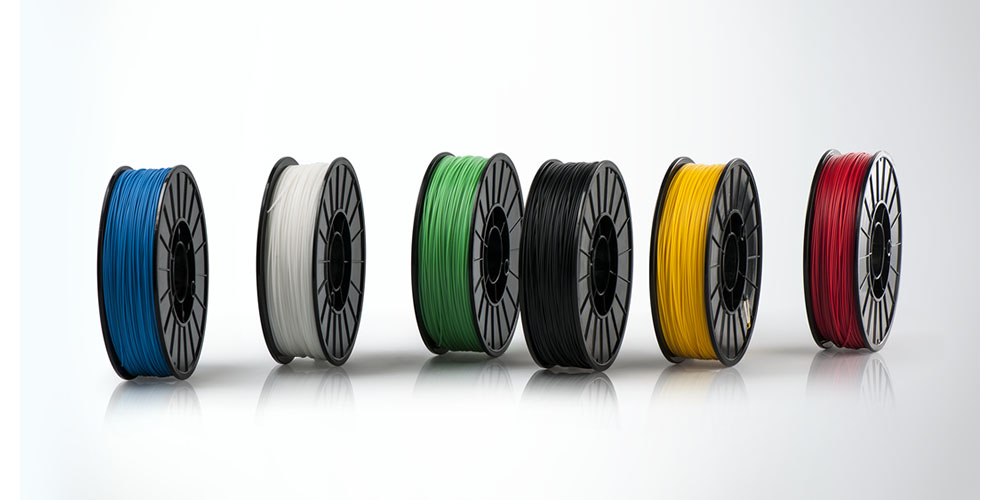A 3D printer filament is a type of printing material used for FFF type 3D printing. The filament is currently one of the most commonly applied types of printing materials in the world. The market is packed with a wide range of filament types. Click here to look at some 3D filament options.
Types of 3D filaments
Below are some of the main and most common types of 3D filaments;
1. PLA
Also known as Polylactic acid, this is the most widely used 3D filament on the market. It is commonly used in FDM printing. Compared to other types of 3D filaments, it is the most beginner-friendly option. This is because it is easy to handle and does not require any complex equipment.
Additionally, PLA filament is quite affordable. Therefore, if you are getting into 3D printing for the first time, you should choose this type of filament. It is also worth mentioning that PLA filament is made from biodegradable and sustainable sources.
2. ABS
Acetonitrile Butadiene Styrene, known simply as ABS, is in many ways similar to PLA. Like PLA, it is also a commonly-used 3D filament. It is one of the strongest filament materials on the market that is inexpensive and offers superior toughness, impact resistance, and chemical stability. Its good thermal conductivity also makes it a worthy opponent for PLA. However, it also has some downsides. For instance, it is highly prone to warping and is not as safe for the environment as it gives off toxic fumes.
3. PETG
PETG, known in full as Polyethylene Terephthalate, is a version of PET that is enhanced with glycol. For this reason, PTEG is more chemically stable than standard PTE. It is also more heat-stable, flexible, and resistant to impact. This filament is highly suitable for outdoor projects and applications. All the features mentioned above, plus the good thermal properties, make it good for these applications. However, the material is tough to finish and more costly than the other alternatives.
4. TPU
TPU, also known as Thermoplastic polyurethane, is a recent version of TPE. It is a highly flexible filament material primarily used to create rubber-like 3D printed objects. It is hard, making it easy to convey through the extruder. It features rubber-like flexibility and excellent layer-to-layer adhesion. However, it is difficult to handle, cannot be smoothed or polished, and has poor bridging performance.
5. Nylon
Nylon filament is also familiar to a lot of people. It is a synthetic polyamide that is applied in a wide range of areas, including 3D printing. It is strong, resistant to abrasion, chemically stable, has a low coefficient of friction, highly heat-stable, and flexible. However, it requires very high temperatures to print. It is also prone to warping and degrades under UV radiation.
Conclusion
Each of the types of materials listed above offers both benefits and downsides. Therefore, when picking the best one, it would help if you considered the pros and cons of each. It would also help if you had professional assistance in the selection process.
